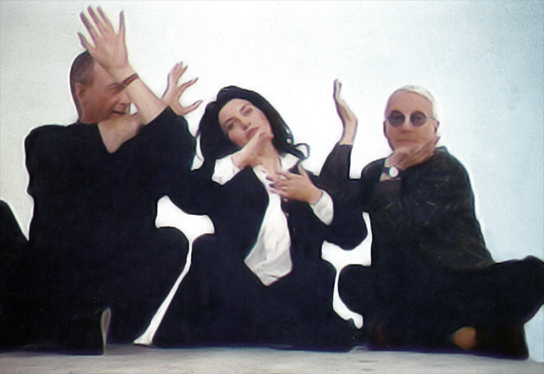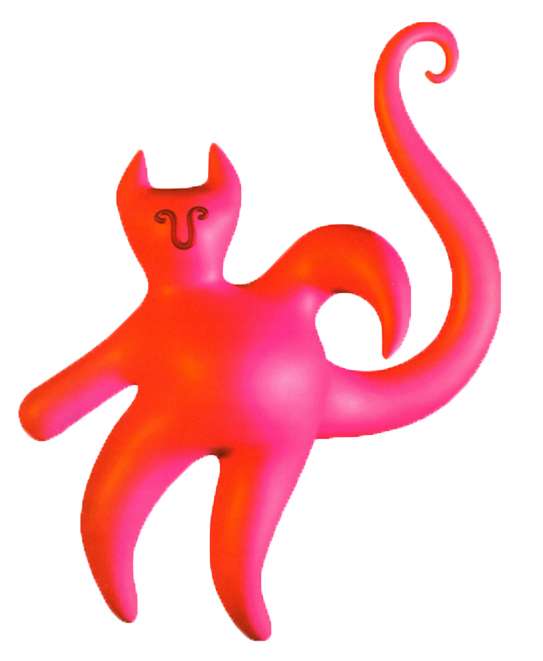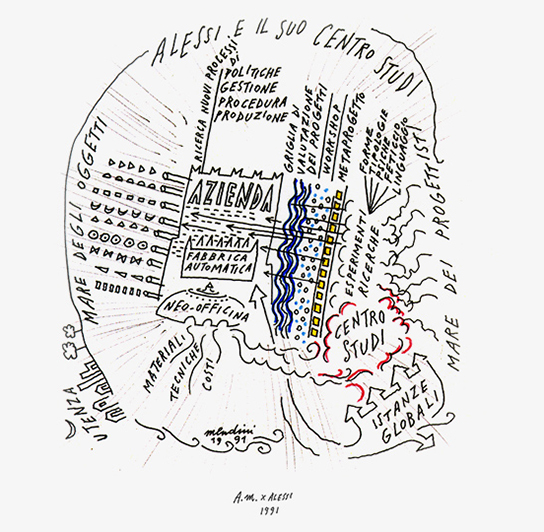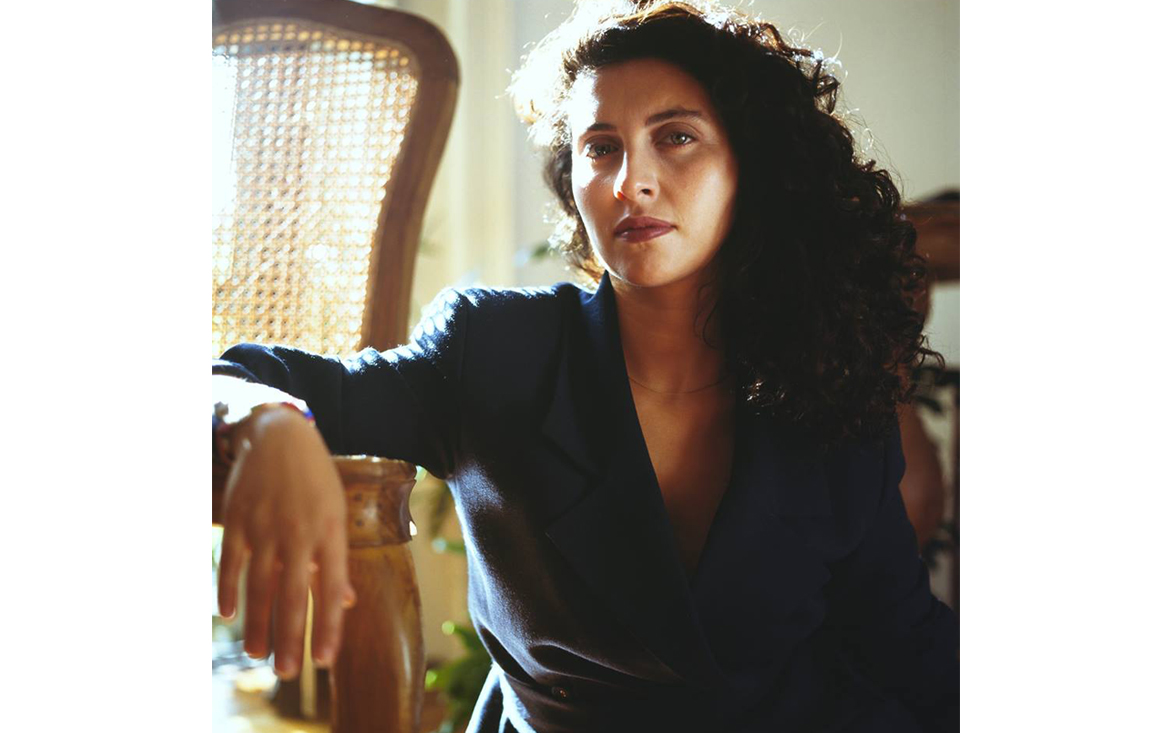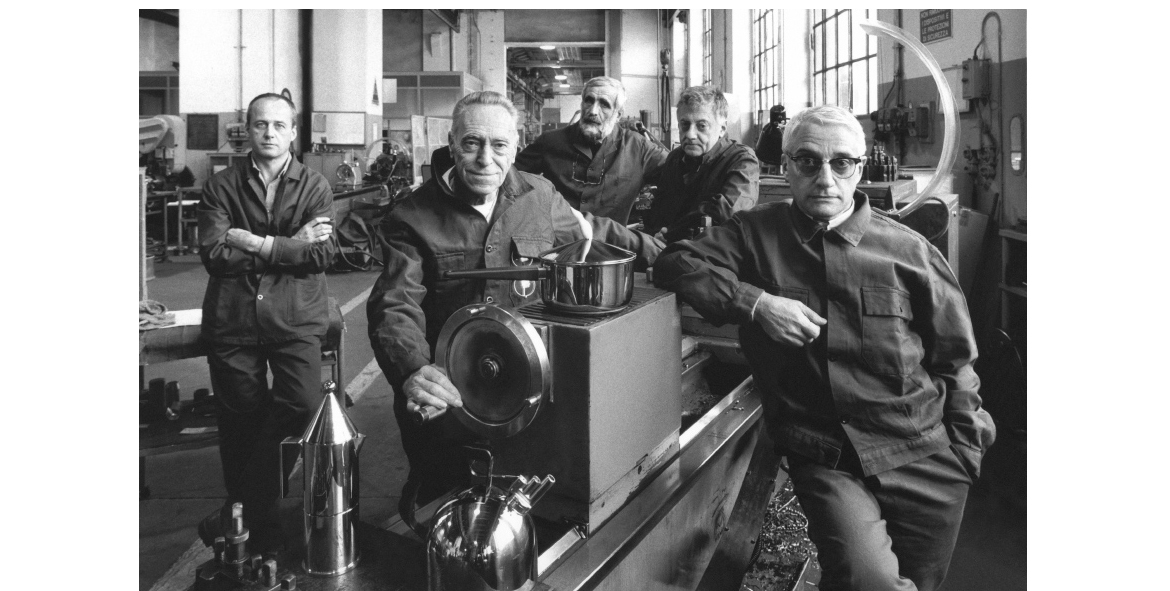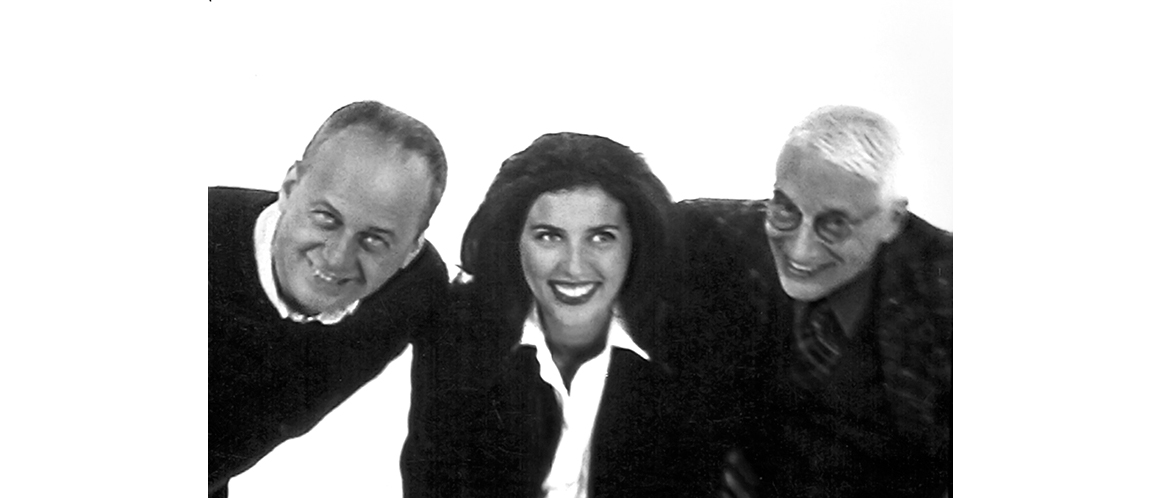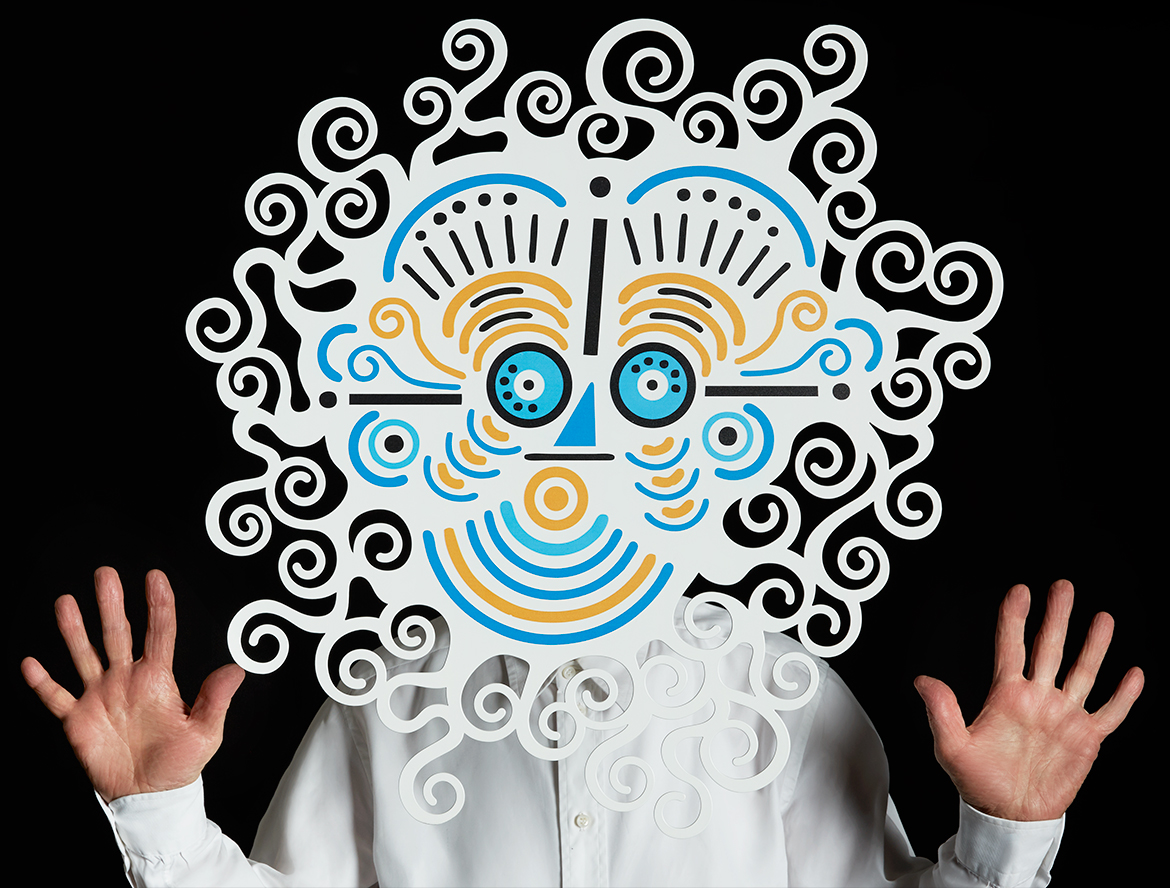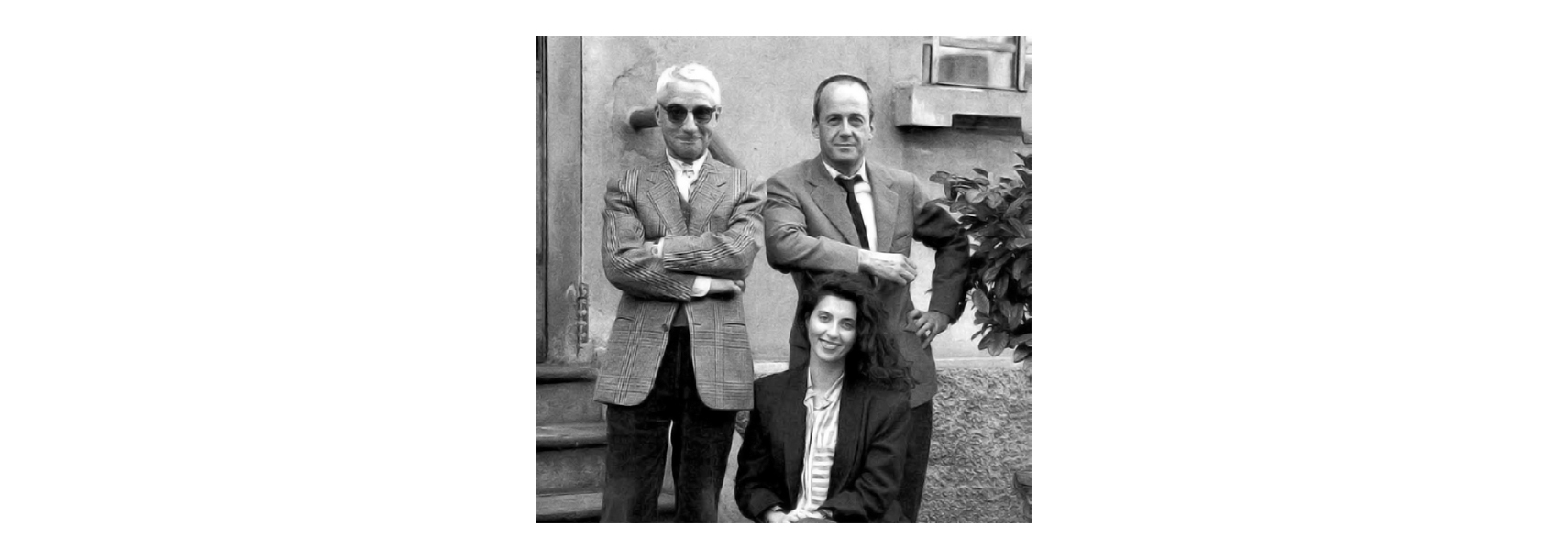Collections
Centro Studi Alessi 1990
"CSA & Metaprogettare. A new approach to the act of designing based on the emotional and sensory qualities of objects"
“The rhizome connects any point to any other point, and none of its sections necessarily refer to traits of the same nature; it brings into play very different regimes of signs, and even nonsign states. Compared to centric (even polycentric) systems, to hierarchical communication and to established connections, the rhizome system is acentric, non-hierarchical and non-significant.”
Gilles Deleuze and Félix Guattari
It all began in the late 80s. When the idea came about to set up a Centro Studi Alessi (Alessi Study Centre), Italian design was in a period of turmoil. It was searching for ways to escape from a notion of design that focused on the form/function polarity, seeking a hybridasation based on the emotional and sensory qualities of objects.
Along with Alessandro Mendini, Alberto Alessi designed the centre as a place where research and experimentation could be developed freely. I was asked to direct this laboratory of sorts, with the idea of pushing the world of Alessi towards a methodological approach that was to be as innovative as possible. I was curious about the company’s dual soul: it was still highly traditional, but at the same time, it was driven by what might be described as a great love for the adventure of design.
We inaugurated the Centro Studi Alessi in 1990. From the beginning, the work was guided by a double-faceted mission. On the one hand, to elaborate theoretical contributions on topics related to the field of objects. These reflections would go on to guide the company’s research, creating an important body of content that was presented through books, which were published quite regularly at the time. On the other hand, to create a new process, an incubator, for working with young people or new designers. Up to that point, the company had only worked with “grand masters” and Alberto Alessi wanted to address the young world of design that was emerging.
“Laura brought to Alessi the intuition and background of a semiologist who had studied under the tutelage of such important scholars as Umberto Eco and Paolo Fabbri. She often reminds me of Marianne Brandt, who in the twenties was the first woman to work in the Bauhaus Metallwerkstatt. Together with her, we began the painstaking process of freeing Alessi from the quagmire of rhetoric that had bogged down certain schools of thought in Italian design at the time. Through her, Alessi’s work flow experienced the introduction of disciplines that had until then remained outside the process, such as anthropology and semiotics.” Alberto Alessi
Studies in semiotics and the research carried out up till then were a great help to me, as were my experiences in entertainment and contemporary dance, which had particularly cultivated the ability to develop creative work in teams. I learned how to explore a narrative of ideas and concepts based on similarities and harmonies between different personalities, consisting of continuous meetings and discussions, summary and review. Teamwork, understood in these terms, became a characteristic of the design developed by the Centro Studi Alessi.
“Metaprogettare” (to meta-design). This word harbours a new way to approach the act of designing. The suffix “meta-” comes from the Greek “to go beyond”. For me the challenge was to overcome the limitations and constraints that generally presided over design. I began to build a different approach based on the creation of a vision, of a context that would encourage dialogue between disciplines involving a variety of professionals around a certain topic. A topic that wasn’t necessarily dictated by a practical need, rather by needs that were more subtle, emotional, affective… This vision gave rise to stimuli and suggestions for designing objects that could enter into a relationship with people, no longer just products, but presences that were in a sense animated, characters in little domestic stories.
”Il rizoma collega un punto qualsiasi con un altro punto qualsiasi, e ciascuno dei suoi tratti non rimanda necessariamente a tratti dello stesso genere, mettendo in gioco regimi di segni molto differenti ed anche stati di non-segni. Rispetto ai sistemi centrici (anche policentrici), a comunicazione gerarchica e collegamenti prestabiliti, il rizoma è un sistema acentrico, non gerarchico e non significante.”
Gilles Deleuze e Félix Guattari
Tutto iniziò alla fine degli anni ’80, l’idea di un Centro Studi per Alessi si sviluppò in un periodo di fermento per il design italiano: si ricercava una via di fuga dal progettare inteso all’interno della polarità forma-funzione, verso un’ibridazione attraverso le qualità emotive e sensoriali degli oggetti.
Insieme ad Alessandro Mendini, Alberto Alessi ideò il progetto di un luogo dove sviluppare in modo molto libero ricerca e sperimentazione. Mi proposero di dirigere questa sorta di laboratorio, con l’idea di spingere il mondo Alessi verso un approccio metodologico quanto più innovativo possibile. Mi incuriosiva la duplice anima dell’azienda: ancora fortemente tradizionale, ma al tempo stesso mossa da quello che potrei descrivere come un grande amore per l’avventura progettuale.
Inaugurammo il Centro Studi Alessi nel 1990. Fin dall’inizio il lavoro fu guidato da una duplice missione. Da un lato, elaborare contributi teorici su temi legati all’oggetto, riflessioni che poi avrebbero orientato la ricerca dell’azienda e creato importanti contenuti presentati nei libri che allora pubblicava con una certa regolarità. Dall’altro, creare un nuovo processo e un incubatore per lavorare con giovani o nuovi designer. Fino ad allora l’azienda aveva collaborato soltanto con i “grandi maestri” e Alberto Alessi desiderava confrontarsi con il mondo del giovane design emergente.
“Laura ha portato in Alessi l’intuizione e la formazione di semiologa acquisita alla scuola di Eco e di Fabbri. Spesso mi ricorda Marianne Brandt, la prima donna che ha lavorato negli anni venti nella Metallwerkstatt del Bauhaus. Con lei è iniziato il faticoso processo per far uscire la Alessi dalle remore della retorica in cui si beava un certo paludato design italiano. Tramite lei abbiamo introdotto in Alessi discipline fino ad allora rimaste estranee, come l’antropologia e la semiologia.” Alberto Alessi
Gli studi in semiotica e le ricerche svolte fino ad allora mi furono di grande aiuto, come le esperienze fatte nel mondo dello spettacolo e della danza contemporanea, in particolare la capacità di sviluppare un lavoro creativo in team. Avevo imparato come esplorare un immaginario attraverso un lavoro basato sulle affinità e le sintonie fra personalità diverse, fatto di continui incontri e confronti, di sintesi e revisioni. Il lavoro in team inteso in questi termini divenne caratteristica peculiare della progettazione sviluppata dal Centro Studi Alessi.
“Metaprogettare”, in questa parola il nuovo modo di affrontare il progetto. Il suffisso meta- deriva dal greco “andare oltre”: per me la sfida era quella di superare i limiti e i vincoli che generalmente presiedevano la progettazione. Iniziai a costruire un diverso approccio basato sulla creazione di un immaginario, di un contesto dove far dialogare più discipline, coinvolgendo figure professionali diverse attorno a un tema. Un tema non dettato da un’esigenza pratica, ma da bisogni più sottili, emozionali, affettivi… Da questo immaginario nascono gli stimoli e le suggestioni per progettare oggetti in grado di entrare in relazione con le persone, non più semplici prodotti, ma presenze in un certo senso animate, personaggi di piccole storie domestiche.



